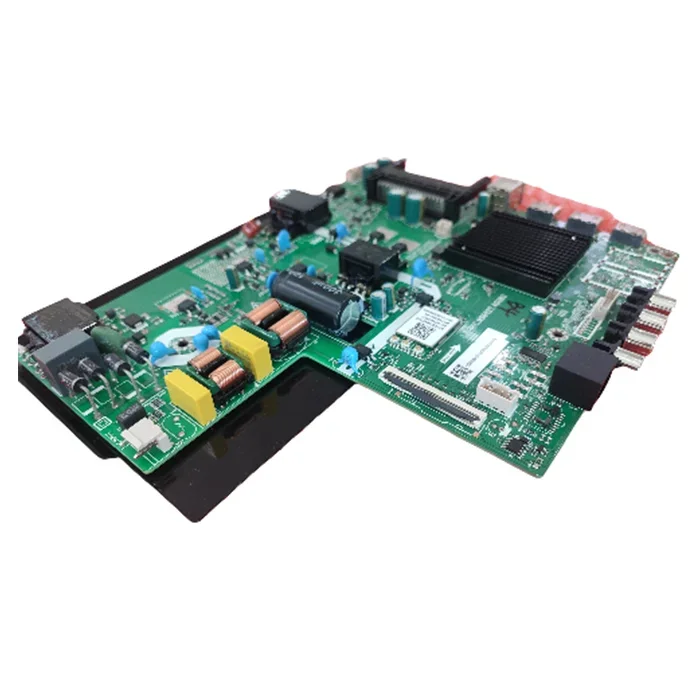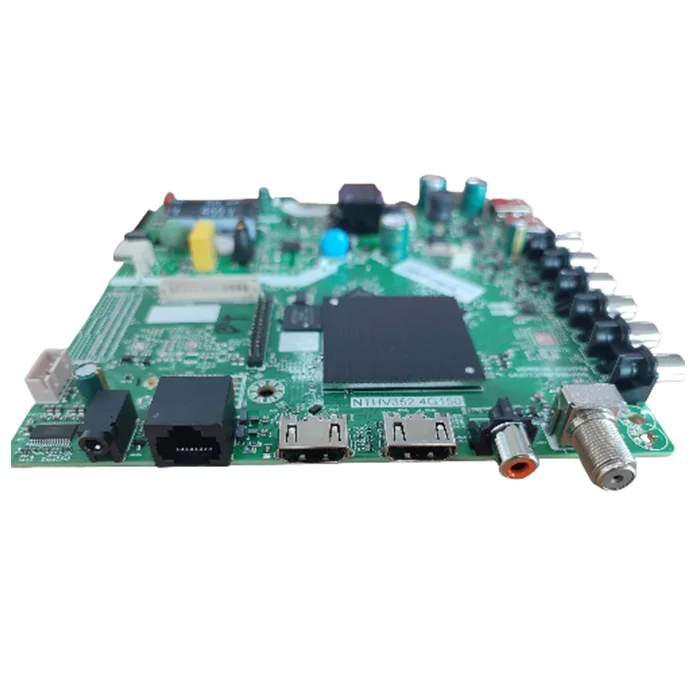In the era of advanced technology, smart TVs have become an integral part of our entertainment systems. Behind the sleek screens and stunning visuals lies a complex network of components that work together to deliver an immersive viewing experience. One such crucial component is the smart TV motherboard. In this article, we will delve into the world of smart TV motherboards, exploring their role, components, and how they contribute to the overall functionality of a smart TV.
What is a Smart TV Motherboard?
A smart TV motherboard, also known as the mainboard or logic board, is the central hub that connects and controls all the other components within a smart TV. It is essentially the brain of the television, responsible for processing and executing commands, managing data, and facilitating communication between different parts of the TV.

The Role of a Smart TV Motherboard
1. Processing Power and Speed:
The motherboard houses the central processing unit (CPU), which is responsible for executing instructions and performing calculations. A powerful CPU ensures smooth and responsive performance, allowing for quick app launches, multitasking, and seamless navigation through menus and settings.
2. Memory and Storage:
Smart TV motherboards also incorporate random access memory (RAM) and storage components. RAM provides temporary storage for data that the TV is actively using, while storage (eMMC, HDD, or SSD) holds the TV's operating system, apps, and media files. Sufficient memory and storage capacity are crucial for smooth multitasking, quick app loading, and storing a large library of content.
3. Connectivity and Input/Output Ports:
The motherboard provides various input/output ports, such as HDMI, USB, Ethernet, and audio jacks, allowing users to connect external devices like gaming consoles, Blu-ray players, sound systems, and more. These ports enable seamless integration with other devices and expand the TV's functionality.
4. Audio and Video Processing:
Smart TV motherboards incorporate audio and video processing chips that enhance the quality of the audio and video output. These chips handle tasks like upscaling lower-resolution content, optimizing color reproduction, and decoding various audio formats, resulting in a more immersive and visually appealing viewing experience.
5. Operating System and User Interface:
The motherboard hosts the smart TV's operating system, which provides the user interface and controls the overall functionality of the TV. Popular operating systems for smart TVs include Android TV, webOS, Tizen, and Roku OS. The motherboard ensures smooth operation of the operating system, enabling users to navigate menus, access apps, and customize settings effortlessly.
Understanding the Components of a Smart TV Motherboard
1. Central Processing Unit (CPU):
The CPU is the brain of the smart TV motherboard, responsible for executing instructions and performing calculations. It determines the TV's processing power and speed.
2. Graphics Processing Unit (GPU):
The GPU handles video processing tasks, including rendering graphics, decoding video formats, and optimizing image quality. A powerful GPU contributes to smooth video playback and enhances the TV's gaming capabilities.
3. Random Access Memory (RAM):
RAM provides temporary storage for data that the TV is actively using. Sufficient RAM ensures smooth multitasking, quick app loading, and seamless navigation through menus.
4. Storage (eMMC, HDD, or SSD):
The storage component holds the TV's operating system, apps, and media files. Different types of storage, such as eMMC, HDD, or SSD, offer varying capacities and read/write speeds.
5. Input/Output Ports (HDMI, USB, Ethernet, etc.):
Input/output ports allow users to connect external devices like gaming consoles, Blu-ray players, sound systems, and more. HDMI ports enable high-definition video and audio transmission, while USB ports facilitate connectivity with external storage devices.
6. Audio and Video Processing Chips:
These chips handle audio and video processing tasks, optimizing the quality of the output. They contribute to enhanced color reproduction, upscaling lower-resolution content, and decoding various audio formats.
7. Power Supply Unit (PSU):
The PSU supplies power to all the components on the motherboard, ensuring stable and reliable operation of the smart TV.

How a Smart TV Motherboard Enhances the Viewing Experience
1. Smooth and Responsive User Interface:
A powerful CPU and sufficient RAM enable a smooth and responsive user interface, allowing users to navigate menus, access apps, and switch between different functions effortlessly.
2. High-Quality Video Playback:
The GPU and video processing chips optimize video playback, enhancing color reproduction, reducing motion blur, and upscaling lower-resolution content to near-native quality.
3. Multitasking and App Performance:
A robust CPU and ample RAM enable smooth multitasking, allowing users to run multiple apps simultaneously without experiencing lag or slowdowns.
4. Connectivity and Streaming Capabilities:
The input/output ports on the motherboard enable seamless connectivity with external devices, facilitating streaming from various sources and expanding the TV's capabilities.
5. Audio Quality and Surround Sound Support:
Audio processing chips enhance the quality of the TV's audio output, ensuring clear and immersive sound. Support for surround sound formats further enhances the audio experience.
Factors to Consider When Choosing a Smart TV Based on its Motherboard
1. Processing Power and Speed:
Consider the CPU's speed and the number of cores it has, as well as the amount of RAM available. A more powerful CPU and ample RAM contribute to better performance.
2. Memory and Storage Capacity:
Consider the amount of storage available for apps, media files, and the operating system. Additionally, sufficient RAM ensures smooth multitasking and quick app loading.
3. Connectivity Options:
Check the availability and types of input/output ports, such as HDMI, USB, Ethernet, and audio jacks, to ensure compatibility with your external devices.
4. Operating System and User Interface:
Consider the smart TV's operating system and user interface, as they determine the overall user experience. Look for an intuitive interface and a wide range of apps and features.
5. Future-Proofing and Upgradability:
Consider the TV's upgradability options, such as firmware updates and compatibility with emerging technologies. This ensures that your TV remains relevant and functional for years to come.

Conclusion
The smart TV motherboard serves as the backbone of a smart TV, orchestrating the seamless integration of various components to deliver an exceptional viewing experience. Understanding its role and the importance of its components can help consumers make informed decisions when purchasing a smart TV. As technology continues to advance, we can expect further enhancements in smart TV motherboard technology, leading to even more immersive and feature-rich entertainment experiences.

